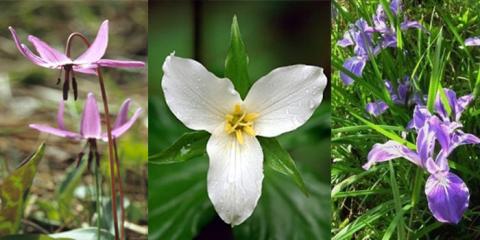A Walk in the Woods
March 11, 2014
The calendar may still say winter, but the signs in the western Oregon woods say spring is in the air. As sure as daffodils are blooming in the Willamette Valley, the woodland wildflowers are starting to emerge.
Hiking in the western Oregon woods this time of year is especially fun because the plants change from week to week. I took a hike on the last day of February at Hopkins Demonstration Forest near Beaver Creek in Clackamas County. The signs of spring were everywhere.
Catkins on California hazel were greenish yellow and noticeably elongated. A shake of a branch sent forth a shower of bright yellow pollen (not a good thing for us allergy sufferers). Indian plum has been leafing out for weeks and now the white pendulant blossoms are starting to open.
Soon we will see Trillium emerge with its distinctive three basal leaves with a lilly flower composed of three larger white petals and three smaller green sepals. Trilliums are quite common in western Oregon.
Trout lily, aka fawn lily or dog-toothed violet is another spring favorite with a drooping yellow or purple lily flower and leaves that are speckled like a trout or a fawn. Like many species of lily, trout lily has six similar looking petals called tepals. Upon close examination you can usually see that three are petals and three are sepals.
Oregon iris is very beautiful, like wild rose, it is a simpler and more elegant version of its hybridized cousins. Oregon iris can be very small and often hides among the grasses and sedges.
Calypso orchid or fairy slipper is my absolute favorite western Oregon wildflower. It is obviously an orchid with a bottom petal that sticks out like a lower lip. Calypso is unique among wild orchids in that it has only one leaf at the base of the plant and the flower stem rise out of it. If you know where to look, you can see the leaves coming out now, but the flowers won’t be up for a few weeks.
Take pictures of wildflowers, but please don't pick them. Most of the herbaceous (non-woody) wildflowers reproduce by bulbs or rhizomes and these can be damaged by picking the flowers. Wildflowers also last much longer if left for the next hiker to enjoy.
For the forest,
Mike Cloughesy
Director of Forestry
All photos are from the Native Plant Society of Oregon. From left: Trout lily, Trilium, Oregon iris
